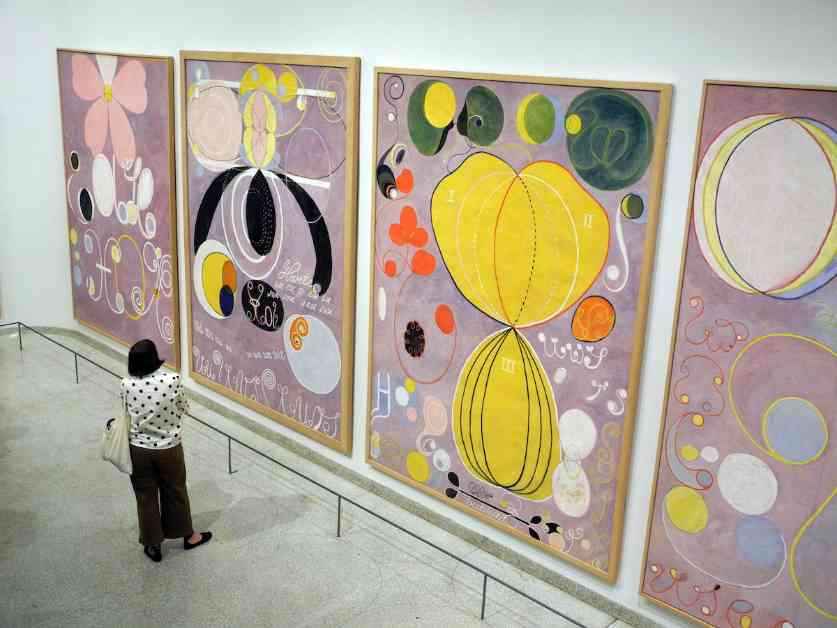Renowned Swedish painter Hilma af Klint, whose abstract works have garnered widespread acclaim in recent years, almost had an entire museum dedicated to her art during her lifetime. In 1940, af Klint deepened her friendship with Tyra Kleen, a Symbolist artist, who proposed a collaboration to create a space in the Swedish town of Sigtuna solely for af Klint’s mesmerizing abstractions. However, af Klint was hesitant about the project due to concerns about sponsorship from the Lutheran Church conflicting with the spiritual themes in her work. The proposed museum never came to fruition, leaving af Klint’s art scattered across various collections.
Recently, Erik af Klint, the artist’s great-grandnephew and chairman of her foundation, made controversial remarks suggesting that exhibitions showcasing af Klint’s work may cease, advocating instead for her art to be displayed only to “spiritual seekers.” This stance has sparked debate within the art world, with some experts expressing concerns about limiting access to af Klint’s groundbreaking work.
Expert Insights and Concerns
Art historian Julia Voss, a leading authority on af Klint, has cautioned against restricting public access to the artist’s work based on Erik af Klint’s interpretation of her intentions. Voss emphasizes the importance of preserving af Klint’s legacy within the broader art historical narrative, highlighting the significance of recent retrospectives that have positioned af Klint alongside prominent male abstractionists of her time.
Voss’s concerns are echoed by others in the art world, who argue that af Klint’s art should be accessible to a wide audience to fully appreciate its innovation and influence. The potential consequences of limiting public exhibitions of af Klint’s work could undermine the progress made in recognizing her as a pioneering artist in the canon of modern abstraction.
Challenges and Controversies
The debate over the commercialization and exhibition of af Klint’s art has led to internal strife within the Hilma af Klint Foundation, with disagreements over partnerships with galleries like David Zwirner and concerns about preserving the artist’s legacy. Erik af Klint’s efforts to restrict the sale and display of af Klint’s works have raised questions about the future accessibility of her art to the public and the implications for her place in art history.
As major institutions like the Guggenheim and MoMA begin to acquire and showcase af Klint’s art, the ongoing tensions within the foundation threaten to overshadow her artistic achievements and impact on the art world. The delicate balance between honoring af Klint’s artistic vision and ensuring her work is widely recognized and appreciated remains a central point of contention among stakeholders.
In conclusion, the legacy of Hilma af Klint, a visionary artist ahead of her time, is at a crossroads as debates over the presentation and preservation of her art continue to unfold. The need to balance her spiritual intentions with the broader cultural significance of her work underscores the complex challenges facing those entrusted with safeguarding her artistic legacy. As discussions evolve, the ultimate goal should be to ensure that af Klint’s art remains accessible to all who seek to experience its transformative power and timeless beauty.












